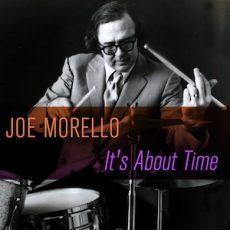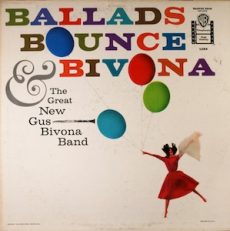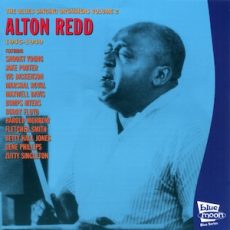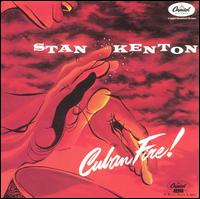
Daily Dose Of Jazz…
Joseph Albert Morello was born July 17, 1928 in Springfield, Massachusetts of French and Italian ancestry. Suffering from partial vision from birth, he devoted himself to indoor activities. He began studying the violin when he was six and three years later, he was a featured soloist with the Boston Symphony Orchestra, playing Mendelssohn’s Violin Concerto, and again three years later.
By fifteen he met the violinist Jascha Heifetz, decided that he would never be able to equal Heifetz’s sound and switched to drumming. He first studied with show drummer Joe Sefcik and then with educator and author George Lawrence Stone. He was so impressed with Morello’s ideas that he incorporated them into his next book. Further study led him to Radio City Music Hall percussionist, Billy Gladstone.
Moving to New York City, he worked with Johnny Smith, Tal Farlow, Stan Kenton, Phil Woods, Sal Salvador, Marian McPartland, Jay McShann, Art Pepper, and Howard McGhee. After a period of playing in McPartland’s trio, Joe declined invitations from Benny Goodman and Tommy Dorsey, favoring a two-month tour with the Dave Brubeck Quartet in 1955. This turned into a performing and recording residency that lasted for well over a decade, departing in 1967.
As an educator Morello became an in-demand clinician, teacher and bandleader, whose many of his former students went on to become well known in their chosen genres. He authored several drum books, including Master Studies, published by Modern Drummer Publications, made instructional videos and received many awards, and was inducted into several Halls of Fame.
Drummer Joe Morello, who appeared on over 120 albums, died at his home in Irvington, New Jersey on March 12, 2011 at the age of 82.
More Posts: author,bandleader,drums,educator,history,instrumental,jazz,music

Daily Dose Of Jazz…
Mayuto Correa was born March 9, 1943 in São Gonçalo, Rio de Janeiro, Brazil and began playing in local bands from the age of twelve when he became a member of the big band Rapazes da Alvorada. At age 16 he formed the ensemble Samba Show with musicians from Niterói and made several recordings for the CBS label with them.
In the 1960s Correa was the artistic director of Pontifical Catholic University of Rio de Janeiro where he wrote and directed several plays. During this time, he also made several recordings in Brazil and worked as the musical director for the shows of Maria Bethânia, Elza Soares, and Eliana Pittman as well as playing in Roberto Carlos’s ensemble RC-7 and performing in Chacrinha’s television shows.
Leaving Brazil for Mexico in 1969 he worked with the Brazilian bossa nova group Tamba 4 before moving to the United States. Establishing himself as a musician in Los Angeles, California in the early 1970s, Mayuto became a vital session player in hundreds of major and minor albums taped in the city by 1977.
Some of the artists he recorded with are Howard Roberts, Charles Lloyd, Nat Adderley, Cannonball Adderley, Cal Tjader, Miriam Makeba, Gábor Szabó, Gato Barbieri, Kenny Burrell, Moacir Santos, Donald Byrd, Henry Mancini, Jon Lucien, Freddie Hubbard, and Richard “Groove” Holmes, among numerous others.
During that period he toured with many of the artists and became the record producer for the Argentine group Arco Iris. He returned to Brazil in 1972 when he toured with Carlos Santana and again in 1979 when he appeared on the Rede Globo television show Sexta Super.
Among his compositions is the soundtrack for the 1979 documentary Homeboys depicting Chicano youth gang culture in East Los Angeles, California. In the later years of his career, Correa performed with his bands Mayuto & Genuises 2000, Mayuto & The Dream Team Big Band, and Mayuto & Samba Pack.
Mayuto Correa continues to perform, record and tour.
More Posts: bandleader,composer,guitar,history,instrumental,jazz,music,percussion

Daily Dose Of Jazz…
Gus Bivona was born on November 25, 1915 in New London, Connecticut. He got his musical start under the close eye of his musician parents, his mother was a pianist, and his father was a guitarist. His first instrument was violin, but he switched to a combination of alto saxophone and clarinet at the age of 16.
He began his professional debut in the Spider Johnson Band, followed by performing around New England in Leo Scalzi’s Brunswick Orchestra. 1935 saw Gus begin a lengthy stint with the Jimmy Monaco Orchestra and worked with the Hudson-DeLange Orchestra, He went on to spend several months with Bunny Berigan in 1938. Through the end of the decade he worked with bandleaders Will Hudson and Teddy Powell.
In 1940 he put his name on his first band but work as a sideman in more established bands appeared to be what he was after. He spent a period with Benny Goodman in 1940 through the spring of 1941 alongside Charlie Christian. Prior to joining the Naval Air Force Band, Bivona gigged with Jan Savitt and Les Brown & His Band of Renown. He went on to have a series of gigs with Tommy Dorsey and Bob Crosby post World War II.
Signing on with MGM In 1947 he performed numerous studio sessions and on freelance recordings into the 1950s. He connected with Steve Allen, the two would occasionally hit the concert trail, including a lengthy club residency at the Roundtable in New York City. Their collaboration rendered Music for Swingers: Gus Bivona Plays the Music of Steve Allen in 1958 followed by many other West Coast jazz recordings. They were in the company of top studio players and arrangers, such as Skip Martin, Henry Mancini and Pete Rugolo.
Clarinetist Gus Bivona, who also palys saxophone and flute, died on January 5, 1996 in Los Angeles, California.
More Posts: bandleader,clarinet,flute,history,instrumental,jazz,music,saxophone

Daily Dose Of Jazz…
Fletcher Smith was born on September 22, 1913 in Lincoln, Nebraska and was orphaned by the age of eight. He and his siblings moved in with their grandfather who had a nine-room house. When the Lloyd Hunter Serenaders came through Lincoln and there was a guitar player there named Finney. He asked Finney to teah him to play if he could get his uncle to buy him a banjo. He wrote out a chart of chords and gave him lessons when he came back.
Smith played for Cootie Williams in 1943 and in the following years with Slim Gaillard, King Perry, Varetta Dillard, Jimmy Rushing, Big Maybelle, Linda Hopkins, Sister Rosetta Tharpe, Stick McGhee, Mickey Baker, Percy Mayfield, and Geechie Smith. In the Fifties he performed with Earl Bostic, Percy Mayfield, Benny Carter, Billy Eckstine, Lionel Hampton, Les Hite, and the Ink Spots, among others.
Under his own name, Fletcher Smith’s Squares and Fletcher Smith’s band, he played in the 1950s and recorded several singles such as Mean Poor Gal, Ting Ting Boom Scat or Shout, Shout, Shout. He recorded extensively as a sideman and toured most of the United States with various organizations. During the early 1970s he was a popular artist in Paris, France performing with the Golden Gate Quartet. From 1981 to 1991 he was featured in Las Vegas, Nevada.
Upon his return to Los Angeles, he became one of the mainstays of the Southern California music scene, he continued playing and honing his book of tunes and arrangements until his death. Pianist and bandleader Fletcher Smith died on August 15, 1993 in Los Angeles, California.
More Posts: bandleader,history,instrumental,jazz,music,piano

Daily Dose Of Jazz…
Art Anton was born on September 8, 1926 in New York City. In the early 40’s he was a private student of Irving Torgman, and was a music major at New York University from 1943 through 1944. He returned for further studies from 1946 through 1947. In between, the Navy grabbed him to play its own military paradiddles. From the late ’40s onward, he began working with leaders such as Herbie Fields, Sonny Dunham, Bobby Byrne, Tommy Reynolds, and Art Wall.
In 1952, he got into the combo of saxophonist Bud Freeman, moving to pianist Ralph Flanagan’s band the following year. Anton’s drumming style stuck closely to straight-ahead jazz swinging or whatever other beat was required. After gigs in 1954 with Jerry Gray and Charlie Barnet, he relocated to the west coast and began freelancing. He performed and recorded with the big band of Stan Kenton to multi-instrumentalist Jimmy Giuffre’s smaller units.
Maintaining steady employment as a jazzman on the stingy Los Angeles, California scene was difficult, and Artie looked for other types of employment. During the ’60s, he turned to selling vacuum cleaners, worked as a private detective, while remaining a highly respected West Coast percussionist.
Drummer and percussionist Art Anton, who is also listed as Artie or Arthur, died on July 27, 2003 in Yakima, Washington.
More Posts: drums,history,instrumental,jazz,music,percussion




